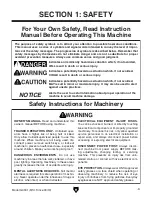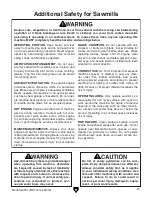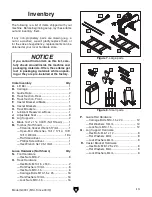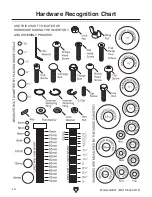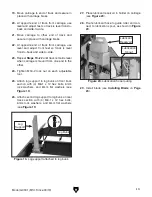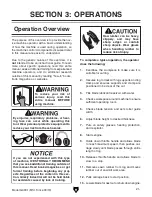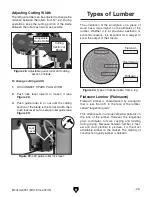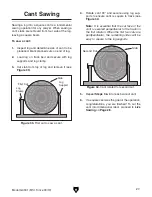
Model G0901 (Mfd. Since 09/19)
-23-
Tensioning Blade
A properly tensioned blade is essential for mak-
ing accurate cuts, maximizing blade life, and
making other bandsaw adjustments. However, a
properly tensioned blade will not compensate for
cutting problems caused by excessive feed rate,
hardness variations between workpieces, and
improper blade selection.
An over-tensioned blade increases the chance of
the blade breaking or wheel misalignment. Under-
tensioned blades wander excessively while cut-
ting and will not track properly during operation.
IMPORTANT: Always release blade tension when
storing machine. Storing the blade with high blade
tension for extended time period can deform
blade and weaken tensioning spring, reducing the
durability and accuracy of the machine.
Note: Relying on the indicator to set tension pro-
vides a quick and easy method of achieving safe,
operational blade tension. If more precision is
required, consider using a blade tensioning gauge
(see
Page 32).
Figure 25. Blade tension indicator.
To tension blade:
1. Turn blade tension handle clockwise until
spring head is even with indicator bracket
(see
Figure 25).
Indicator
Bracket
Spring
Head
Installing Blade
1. DISCONNECT SPARK PLUG WIRE!
2. Open blade cover and support it on blade
cover latch (see
Figure 23).
Figure 23. Blade cover supported by blade
cover latch.
Blade Cover
Latch
Figure 24. Proper blade routing.
5. Close blade cover.
6. Adjust blade tension, then adjust guide roll-
ers (see
Tensioning Blade on this page and
Adjusting Guide Rollers on Page 24).
Guide
Roller
3. Hold blade from each side and position it in
front of wheels so blade teeth are facing front
of machine and pointing toward dust port.
4. Slide blade through slots in bottom of blade
housing and under guide rollers (see
Figure
24), then slide blade over each wheel.
Summary of Contents for G0901
Page 56: ......

